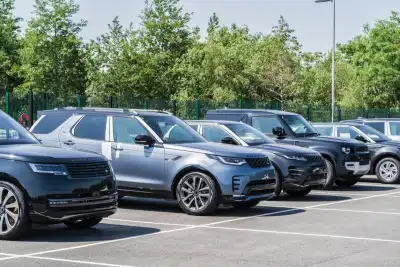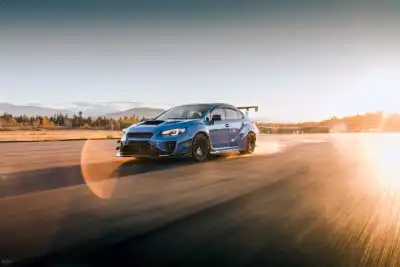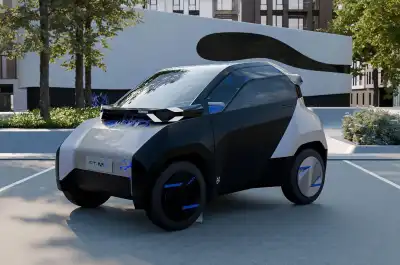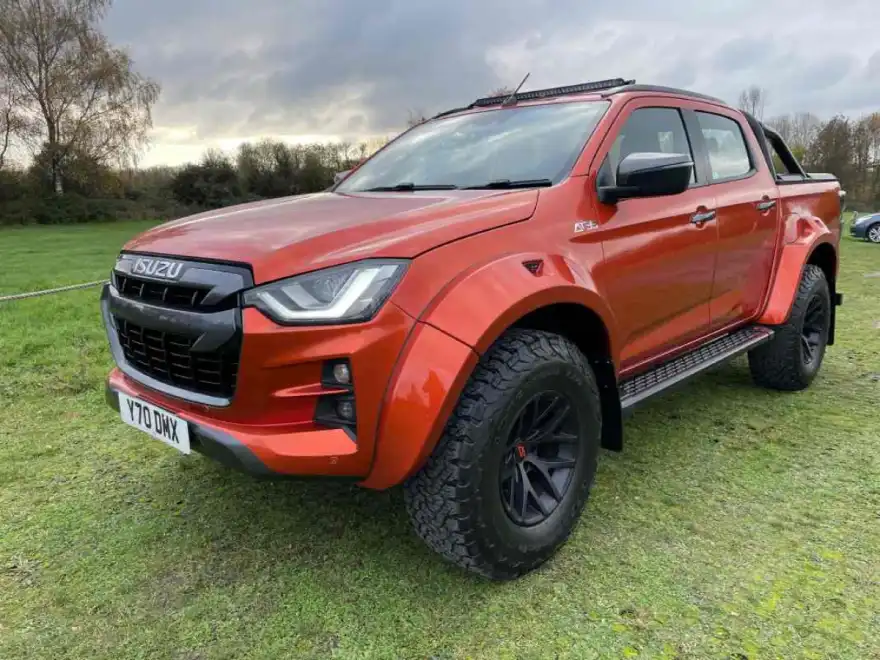
Despite a number of top-quality pick-ups being withdrawn from market in recent years, there is a still a wealth of choice for buyers looking for something a little bit different.
Designed to be workhorses that can put in a day’s shift on a building site while still looking cool enough to drop off the kids on the school run, pick-ups are proving a practical alternative to the ever-growing number of SUVs out there.
And while there are great models such as the Toyota Hilux and SsangYong Musso on offer, we are focusing on two vehicles that have been beefed up to such a level they look ready to cope with the apocalypse.
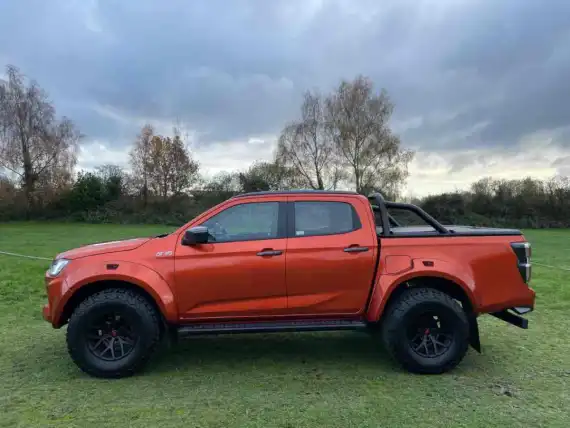
The models are the mighty Ford Ranger Raptor Special Edition and the Isuzu D-Max Arctic Trucks AT35 and both vehicles demand attention wherever they pass with a road presence that is simply awesome.
Both are four-door double cabs and each model has its own individual character and appeal, but which one comes out on top? We look at costs, performance, efficiency and a number of other factors in a bid to help you choose.
Price and Performance
When you consider the standard Ford Ranger rocks in at £27,841 (excluding VAT) and the Ranger Raptor costs from £47,000, upgrading to the range-topping Raptor Special Edition sees the price rise to £54,940 (including VAT). That’s pretty steep for a model that is, in theory, a working vehicle.
And despite its formidable looks, the Ranger Raptor SE is only powered by the standard Ranger 2.0-litre EcoBlue turbo-diesel engine delivering 213PS and 500Nm of torque. It does look like something far more powerful should be beating beneath the bonnet, but Ford has announced that future Raptors will feature the option of a new 3.0-litre petrol engine with a 2.0-litre BiTurbo diesel unit to follow.
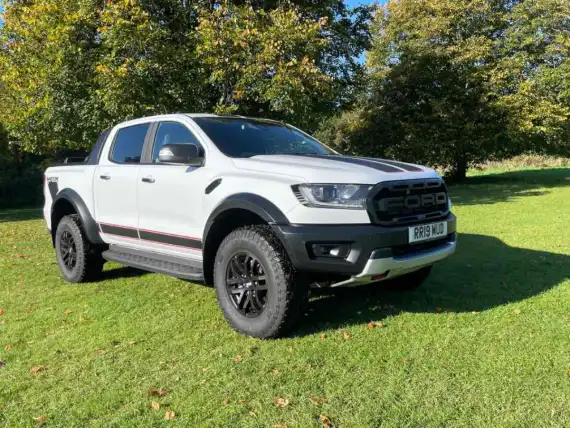
But back to the current version on test – it can sprint from 0-62mph in 9.0 seconds and maxes out at 112mph. It features a 10-speed automatic gearbox and is deceptively comfortable to drive despite the elevated ride height and upgraded Fox suspension system.
And it goes without saying, the off-roading ability is outstanding. Very little Mother Nature can throw in its path will trouble the Ranger Raptor SE.
One slight downside though is the payload limit. As it falls below HMRC’s one-tonne limit, it fails to qualify as a commercial vehicle. That means anyone looking to buy the Ranger Raptor SE as a business vehicle will not be able to claim back the 20 per cent tax relief.
So, how does all this compare with the Isuzu D-Max Arctic Trucks AT35? This model costs £49,499, (excluding VAT) or £55,529 for private buyers. Once again this is quite a price leap compared to the standard D-Max line-up that starts at £23,149 (excluding VAT) rising to £33,499 for the range-topping V-Cross which the Arctic Truck AT35 is based on.
And just like the Raptor SE, this model looks like it should be driven by a huge engine, but it’s not. In fact, it has the same 1.9-litre, four cylinder engine found beneath the bonnet of the D-Max line-up delivering 164PS and 360Nm of torque. It can complete the 0-62mph dash in a respectable 13.0 seconds and tops out at 112mph. So, it’s not quite so quick out the starting blocks as the Ford, but the handling does impress with decent acceleration through the six-speed automatic gearbox.
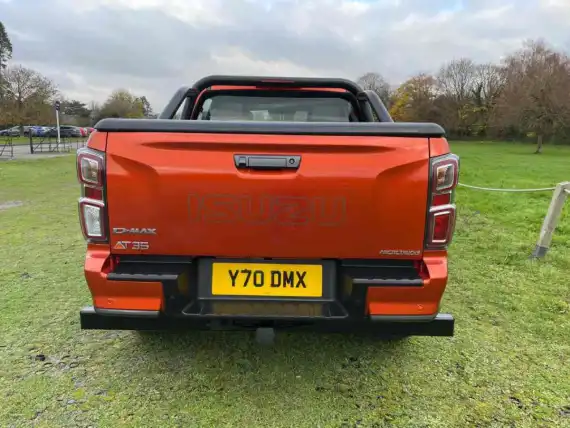
And this pick-up with its massive wheels has a major advantage when driving down country lanes – you can see clearly above all the hedgerows. That said; you will see the sheer terror on the faces of oncoming drivers on narrow lanes when driving either the Ford or the Isuzu!
Just like the Ford, the Isuzu features an advanced Bilstein suspension system for added refinement.
Both vehicles also have all the off-road settings to cope with gruelling terrain and adverse weather conditions.
Design and Tech
The Ford Ranger Raptor SE and the Isuzu D-Max Arctic Trucks AT35 scream attitude and have total ‘look at me’ design traits. It’s like designers and engineers have taken the standard Ranger and D-Max and been given a free rein to throw all the bells and whistles at them with no limits to what can be added.
For example, the Ranger Raptor SE features the likes of racing stripes, black 17-inch wheels with huge 33-inch tyres, Raptor badging, a black Raptor grille, privacy glass, strengthened alloy side steps, a front aluminium skid plate, a black sports bar, a roller-shutter cover, LED headlights with black surrounds, widened front and rear wheel arches, plus black and red decals.
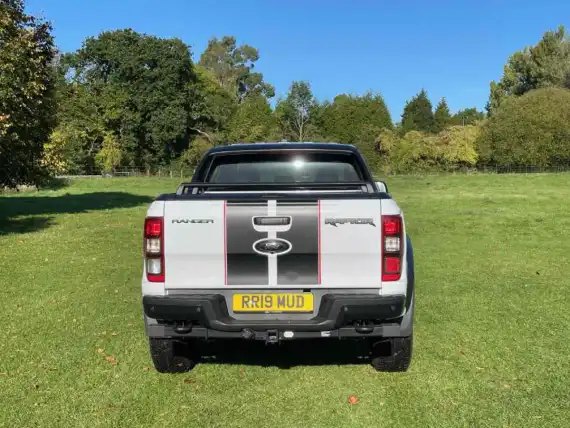
Side steps and grab handles help you climb inside where you will be impressed with the comfy powered and heated seats neatly upholstered with red stitching. The Raptor logo is scattered around the cabin and the tech is care of Ford’s SYNC 3 infotainment system with an eight-inch touchscreen and navigation.
Expect to find all the mod cons such as Apple CarPlay and Android Auto, plus the Ford Pass Connect onboard modem which introduces a wi-fi hotspot to connect devices.
The D-Max Arctic Trucks AT35 is equally, if not more imposing than the Ranger. It boasts a striking gun metal radiator grille and door handles, Arctic Trucks side steps, flared wheel arches covering massive 35-inch diameter tyres, roof rails, bi-LED headlights with LED daytime running lights, LED rear lights and lots of Arctic Trucks badging.
Once again, the cabin is packed with creature comforts including a nine-inch multifunction colour touchscreen, Apple CarPlay and Android Auto, a CD player (yes really), an eight-speaker sound system DAB radio, Bluetooth and wireless phone charger. On the downside, there is no navigation system, but it’s easy to connect a smartphone to cover that.
You will need the assistance of the side steps and grab handles to climb on board and the supportive seats are both power-operated and heated.
Practicality
In fairness, many people buying pick-ups these days don’t even venture from the safety of the Tarmac. And if you consider the practicality issues of not having a traditional boot and not least of all, parking, then these vehicles are often lifestyle choices through and through.
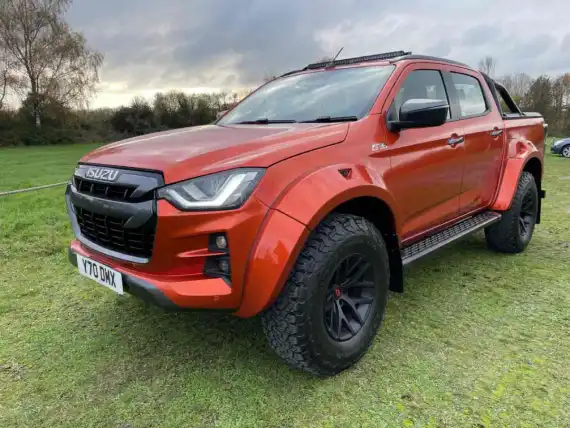
However, no matter how outlandish their design, if called upon to put in a shift, they both deliver.
The D-Max Arctic Trucks AT35 can carry a one-tonne payload, tow a trailer or caravan weighing up to 3.5 tonnes while the Ford Ranger Raptor SE can only carry 620kg and has a lower towing limit of 2.5 tonnes.
There are bundles of storage options scattered throughout the cabin of each model and there is ample room in the back for passengers to sit comfortably, although leg room for adults is not as impressive as you would think when viewing the cab sizes from the outside.
Both vehicles were awarded the maximum five stars when tested for their Euro NCAP safety rating.
Efficiency
Day-to-day running costs of both vehicles are not exactly cheap which is hardly surprising when you look at the size of them.
The Ford can achieve a combined 31.7mpg with carbon emissions of 201-204g/km. And despite not qualifying for Benefit in Kind business tax relief, it is taxed as a light commercial vehicle as it is still fundamentally a Ranger. That’s encouraging news as the road tax fee is set at £290, rather than being based on the carbon emissions figures.
By comparison, the Isuzu D-Max AT35 can deliver a combined 30.7mpg with carbon emissions of 241g/km making it less environmentally-friendly than the Ford and very similar with regards fuel efficiency. And similarly to the Ranger Raptor SE, it is classed as a light commercial vehicle, so the tax payments are thankfully fixed.
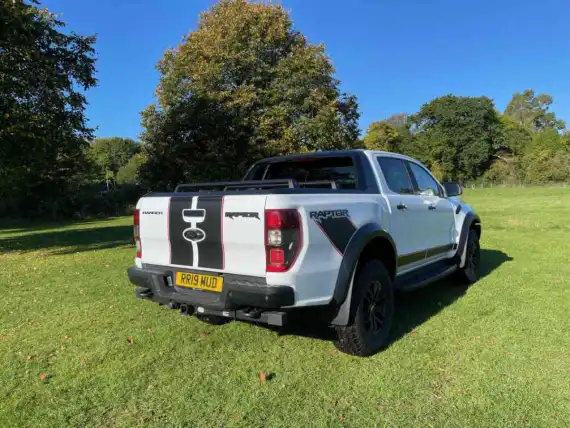
The Ford Ranger Raptor SE sits in insurance group 40 while the Isuzu D-Max Arctic Trucks AT35 is in group 41.But another important issue is the warranties. This is an impressive five years or 125,000 miles for the Isuzu which compares favourably to Ford’s three-year, 60,000 miles package.
So, which takes your fancy?
In all honesty, it’s very hard to pick an out-and-out winner between these two equally impressive pick-ups.
They are priced very similarly, while the Ford is very slightly more efficient. Each model features a wealth of tech to explore and both cabins are neatly designed with a mix of practicality and comfort as standard.
The Ford takes the prize for best performance with sharper acceleration and its 10-speed gearbox is also superior. However, the D-Max scoops the honours for payload and towing abilities. Both look stunning, mainly due to those truly over-sized wheels.
Then there is the warranty with the Isuzu winning that category by a large margin.
It’s so close and customer choice may all boil down to brand preference in the end. If pressured for a decision, I think my vote would marginally go in favour of the D-Max. But ask me again tomorrow and I may have changed my mind.

